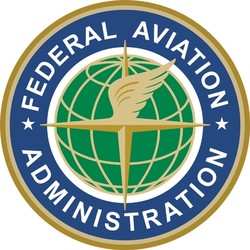Thu, Jan 30, 2014
Has Advocated For The Change For Several Years
The NBAA welcomed changes enacted on Jan. 27 by the FAA that will streamline the process for operators seeking to receive a letter of authorization (LOA) for operations in Reduced Vertical Separation Minima (RVSM) airspace above 28,000 feet MSL. NBAA representatives, who first brought the challenges related to RVSM authorization to the attention of FAA officials several years ago, have been among the participants on a joint industry/agency task force focused on ways to streamline the authorization process. The task force sought to establish standardized procedures for operator input and FAA inspector review, in order to reduce inconsistent application of the regulatory requirements, as well as the amount of time required to process RVSM authorizations.

In May 2013, the team presented its recommendations to the FAA's Performance-based Operations Aviation Rulemaking Committee (PARC), incorporating guidance to simplify the LOA process, in large part through acknowledgement of previous operator and aircraft experience, and prior approvals for RVSM-mandated aircraft equipment and training processes.
Mark Larsen, NBAA’s senior manager, safety and flight operations, noted the FAA’s final policy is in line with recommendations made by the task force to improve the LOA inspection process, while maintaining the continued operational safety in the national airspace system. "We believe this will allow a significant shift in an inspector's predisposition when conducting a review, particularly when handling relatively simple administrative changes for existing operators," Larsen added. "Whereas earlier guidance dictated that an inspection had to always begin at square one - even for something as minor as a tail-number change - now the inspector may accept an operator's demonstration of unchanged items and focus their time on reviewing the actual changes made.

“Additionally,” Larsen continued, “We are hopeful that the lessons learned in developing this process can be applied to the broad range of other required approvals for business aircraft operations.”
FAA aviation safety inspector Madison Walton, AFS-470, joined aviation attorney David Norton of Shackelford, Melton, McKinley & Norton, LLP in co-chairing the joint task force. Personnel from AFS-800, AFS-300, and Flight Standards District Offices were included on the agency team as subject matter experts, while representatives from aviation organizations, manufacturers, RVSM product providers and other stakeholders offered industry perspectives. "We spent a lot of time on this, and the outcome will benefit both operators and the FAA," Norton noted. "We had some really dedicated, professional and practical personnel working on this issue, and we each listened to concerns from all sides before finding a flexible solution to speed up the administrative process. This was an extremely positive experience.”
The changes to the RVSM authorization process were formally announced during a General Aviation Safety Summit hosted by agency Administrator Michael Huerta. NBAA has chaired a coalition of GA groups represented at the Summit for the past two years.
More News
Ultrahigh Frequency (UHF) The frequency band between 300 and 3,000 MHz. The bank of radio frequencies used for military air/ground voice communications. In some instances this may >[...]
During The 7 Second Descent, There Was Another TAWS Alert At Which Time The Engine Remained At Full Power On October 24, 2025 at 2115 mountain daylight time, a Cirrus SR22T, N740TS>[...]
From 2009 (YouTube Edition): Educational Organization Aims to Inspire by Sharing Tuskegee Story Founding leader Don Hinz summarized the Red Tail Project’s mission in simple, >[...]
“This feels like an important step since space travel for people with disabilities is still in its very early days... I’m so thankful and hope it inspires a change in m>[...]
Also: New Katanas, Kern County FD Training, IndiGo’s Botched Roster, MGen. Leavitt Named ERAU Dean The Australian Transportation Safety Bureau (ATSB) has wrapped up its inves>[...]
 ANN's Daily Aero-Term (12.19.25): Ultrahigh Frequency (UHF)
ANN's Daily Aero-Term (12.19.25): Ultrahigh Frequency (UHF) NTSB Prelim: Cirrus Design Corp SR22T
NTSB Prelim: Cirrus Design Corp SR22T Classic Aero-TV: The Red Tail Project--Carrying the Torch of the Tuskegee Airmen
Classic Aero-TV: The Red Tail Project--Carrying the Torch of the Tuskegee Airmen Aero-News: Quote of the Day (12.19.25)
Aero-News: Quote of the Day (12.19.25) Airborne 12.17.25: Skydiver Hooks Tail, Cooper Rotax Mount, NTSB v NDAA
Airborne 12.17.25: Skydiver Hooks Tail, Cooper Rotax Mount, NTSB v NDAA




